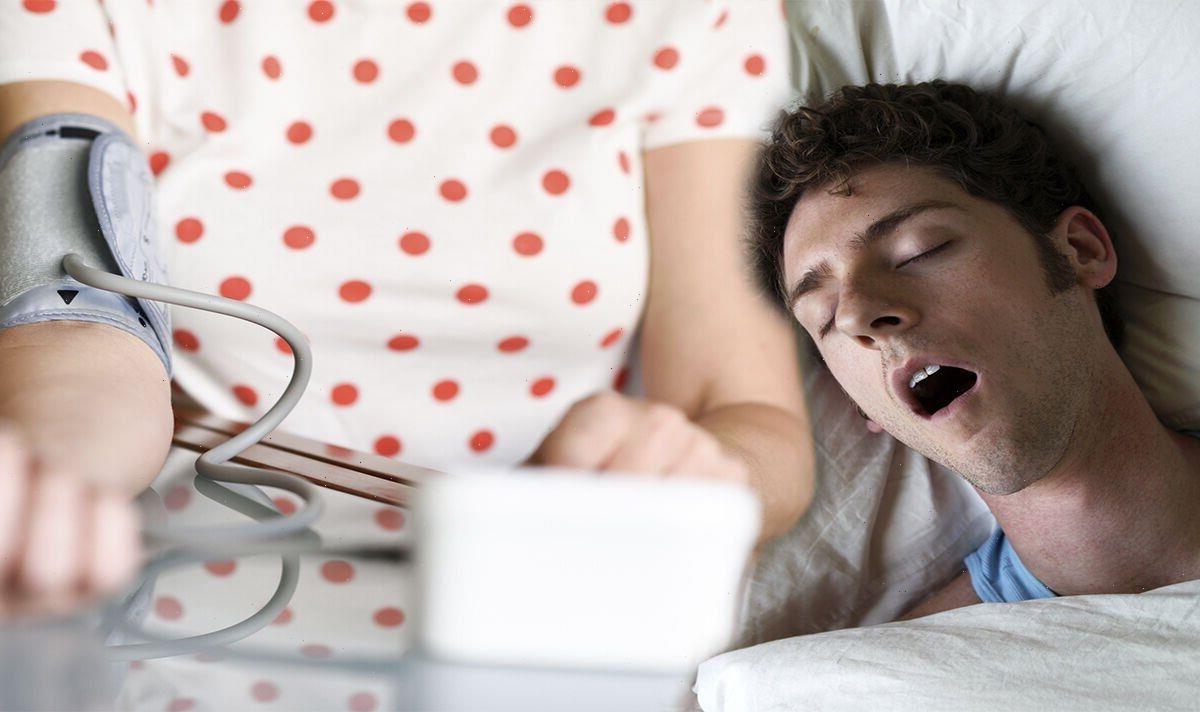Dr Chris Steele shares diet tips on reducing blood pressure
We use your sign-up to provide content in ways you’ve consented to and to improve our understanding of you. This may include adverts from us and 3rd parties based on our understanding. You can unsubscribe at any time. More info
High blood pressure (hypertension) is one of the most important risk factors for cardiovascular disease. If your blood pressure is too high, it can damage your blood vessels and cause a number of potentially life-threatening conditions. How you sleep can have a major influence on your reading.
While asleep, sleep apnoea triggers the brain to pump more blood to key areas such as the brain and heart.
This puts added pressure on your artery walls and spikes your blood pressure higher than if you were breathing normally while asleep.
Sudden drops in blood oxygen levels that occur during sleep apnoea increase blood pressure and strain the cardiovascular system.
Additionally, having obstructive sleep apnoea increases a person’s risk of hypertension complications.

“Sleep apnoea is a sleep disorder that causes numerous lapses in breathing during sleep,” says the Sleep Foundation.
The health site adds: “There are two types of sleep apnoea: obstructive sleep apnoea (OSA) and central sleep apnoea (CSA).
“OSA is marked by episodes of airway collapse, which blocks airflow into the lungs and often causes snoring and gasping during sleep.
“In CSA, breathing lapses occur because of a lack of communication between the brain and the muscles involved in breathing.”
Medicover Hospitals says: “Most adults stay in bed without giving a second thought to how they’re located. It is such a routine habit that many do not consider the health effects of sleeping in one way or another
“But sleep researchers and doctors say our sleeping position is important.
“Sleeping on your stomach, back or side can make a difference in snoring, sleep apnoea, neck and back pain, and other medical conditions.”

Sleeping on the left side has been said to be the best sleeping position for hypertension because it relieves blood pressure on blood vessels that return blood to the heart.
Back pain can also cause significant sleep disturbances therefore avoiding any sleeping positions which puts strain on this area should be avoided.
“Resting on your side, with your back mostly straight, can help to reduce sleep apnoea,” adds Medicover.
“It can also cause pain in the neck and back since your spine stays aligned.”
Alongside better sleep hygiene, watching your diet is imperative when attempting to lower your reading and avoiding cardiovascular health complications.
Foods to avoid before bedtime and reduced during the day include:
- Salty foods
- Sugary foods
- Red meat
- Sugary drinks
- Alcohol
- Saturated fats
- Processed and pre-packaged foods
- Condiments.
Source: Read Full Article
